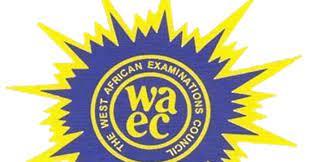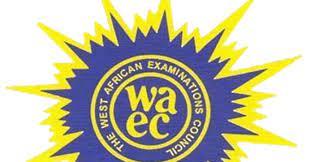
WAEC Syllabus for Block Laying, Brick Laying And Concrete Works. WAEC Syllabus for Block Laying, Brick Laying And Concrete Works is available for all candidates who want to participate in the examination. The West African examination council (WAEC) has officially introduced a syllabus that will guide all the WAEC candidates who wish to write the WAEC examination this year. For a very successful Block Laying, Brick Laying And Concrete Works examination for this year, you need to check out the available areas of concentration. It has been divided into sections with chapters, followed by the topics to be covered in preparation for the exams. In the WAEC Block Laying, Brick Laying And Concrete Work syllabus, you will also see the format of how the WAEC Block Laying, Brick Laying And Concrete Work questions will be presented. Jamb form
There are always 3 sections to answer questions from. Paper 1 is objective, paper 2 contains essay questions and paper 3 is practical's. Where paper one (1) carries 45 minutes for 40 marks; paper two (2) carries 1 hour for 60 marks while paper three (3) carries 3 hours duration for 100 marks.

This WAEC syllabus is for both the O'level WAEC and General Certificate Examination (GCE) candidates. Final year students in the senior secondary school level and external candidates are eligible to make use of this syllabus and prepare ahead of the examination.
See the full detailed information concerning the WAEC Block Laying, Brick Laying And Concrete Works Syllabus below.
There will be three papers, Papers 1, 2 and 3 all of which must be taken.Papers 1 and 2 shall be a composite paper to be taken at one sitting in 1 hour 45 minutes for 100 marks.
Paper 1: will consist of forty multiple-choice objective questions all of which are to be answered in 45 minutes for 40 arks.
Paper 2: will consist of five short-structured questions. Candidates will be required to answer any four in 1 hour for 60 marks.
Paper 3 will be a practical test of 3 hours duration for 100 marks. It will be a work
piece involving laying of a total number of blocks not exceeding 30 and where the work piece is made of bricks only, the total number of bricks shall not exceed 100.
Where the work piece to be laid is a combination of bricks and blocks, this will not contain more than 20 blocks and 40 bricks. (i.e. in composite walling).
A list of materials for the test shall be made available to schools not less than two weeks before the paper is taken for material procurement and relevant preparations.
Alternatively, in the event that materials for the actual practical test cannot be acquired, the Council may consider testing theoretically, candidates' level of acquisition of the practical skills prescribed in the syllabus. For this alternative test, there will be two compulsory questions to be answered in 3 hours for 100 marks.
1.
Workshop and site safety
(i) Various safety rules at work site.
(ii) First aids.
(iii) Purpose of safety.
(iv) Safety regulations (scaffolding, electrical, installations, etc)
(v) Protective wears.
3
Site preparations and setting - out
(i) Tools and equipment used for site preparation.
(ii) Clearing of building site.
(iii) Methods of setting out.
(iv) Setting out tools and materials.
4.
Manufacture, application and properties of blocks and bricks.
(i) Manufacturing processes of blocks and bricks.
(ii) Types of bricks and blocks
(iii) Materials used for blocks and bricks (sand, lime, cement, clay, laterite and water).
6
Formwork for construction work.
(i) Functions and functional requirements of formwork.
(ii) Materials used for formwork.
(iii) Advantages of steel and timber formworks.
(iv) Construction of formworks for concrete floor slabs, beams, columns, arches lintels and staircase.
(v) Erection and striking of formworks.
7
Concreting operations
(i) Mix proportions. (Cement - aggregate ratio; water-cement ratio).
(ii) Stages in concreting (Batching, mixing, transporting, placing, curing).
(iii) Methods of transporting wet concrete.
(iv) Testing of concrete.
(v) Properties of concrete.
(vi) Methods of making construction joints in concrete elements. (Beams, columns, concrete roofs and slab).
(vii) Need for concrete reinforcement.
(viii) Methods of reinforcing concrete elements
(ix) Types of steel reinforcement bars.
(x) Casting and curing of concrete structures (in-situ and precast concrete).
8
Basic principles of substructure construction work including ground floors
(i) Types of soil.
(ii) Definitions of site and soil investigation.
(iii) Definitions of bearing capacity of soil.
(iv) Definition of foundation, types and uses.
(v) Definitions of ground floors, types, uses and construction.
(vi) Materials for d.p.c. and d.p.m.
(vii) Differences between d.p.c. and d.p.m.
(viii) Methods of placing and positioning d.p.c. in walls.
10
Walls
(i) Functions and types of walls.
(ii) Walling materials.
(iii) Common bonds in brick/block walls.
(iv) Mortar (types, mixing methods and ratios).
(v) Differences between pointing and jointing.
(vi) Types of pointing and jointing.
11
Openings in walls.
(i) Functions and types of openings.
(ii) Materials used for lintels, beams, and arches
(iii) Windows and doors
- functions and types of windows and doors.
- materials for windows and doors.
- methods of fixing.
(iv) Ironmongery for doors and windows.
12
Stairs construction
(i) Types of stair.
(ii) Construction of a straight flight stair.
14
Finishes
(i) Types of finishes.
(ii) Types of finishing materials.
(iii) Characteristics of finishing materials.
(iv) Uses of finishing materials
(v) Care and maintenance of finishes.
15
Construction of drainage system.
(i) Principles of good drainage system.
(ii) Types of a drainage system.
(iii) Differences between a sewer and a drain.
(iv) Simple sketches of septic-tank; soakaway pit, inspection chamber, manhole and cesspool.
(v) Surface drainage.
(vi) Method of laying drain pipes to a specified gradient.
16
Kerbs
(i) Functions and types of kerbs.
(ii) Materials used in production of kerbs.
(iii) Methods of laying precast concrete kerbs.
17
Business opportunities in Building
(i) Opportunities in building industry.
(ii) Procedures for establishing businesses in the industry.
(iii) Requirements for managing construction business
(iv) Estimating the cost of construction jobs.
(v) Principles and techniques of Book-keeping.
LIST OF TOOLS AND EQUIPMENT TOOLS EQUIPMENT- Internal angle trowel 1. A complete set of scaffolding, fittings and scaffolding pipes
- External angle trowels 2. Block moulding machines
- Pointing trowel 3. Buckets
- Hand trowel 4. Concrete mixer
- Block axe 5. Concrete vibrator (Poker and
clamp-on)
- Boat level 6. Gauge box
- Bolster 7. Manual hand mould
- Club hammer 8. Hand rammer
- Builders square 9. Hand sieves (various sizes)
- Brick hammer 10. Headpan
- Cold chisel 11. Levelling instrument
- Corner blocks 12. Measuring tape
- Folding rule 13. Pick axe
- Gauge rod or rule 14. Slump test apparatus.
- Hawk 15. Tyrolean machine
- Joint duster 16. Water hoses and roses
- Jointers 17. Wheelbarrow.
- Jointing board/caulking board 18. Terrazzo grinding machine
- Line and pin
- Mason's hand saw
- Metal float
- Plastering trowel
- Plumb rule and bob
- Builder's line
- Spade
- Shovel
- Claw hammer
- Gauge lath
- Pointing tools
- Pointing trowel
- Range.
- Spirit level.
- Steel square
- Straight edge
- Skutch
- Square and bevel
- Tingle plate
- Wire brush
- Wooden float.
